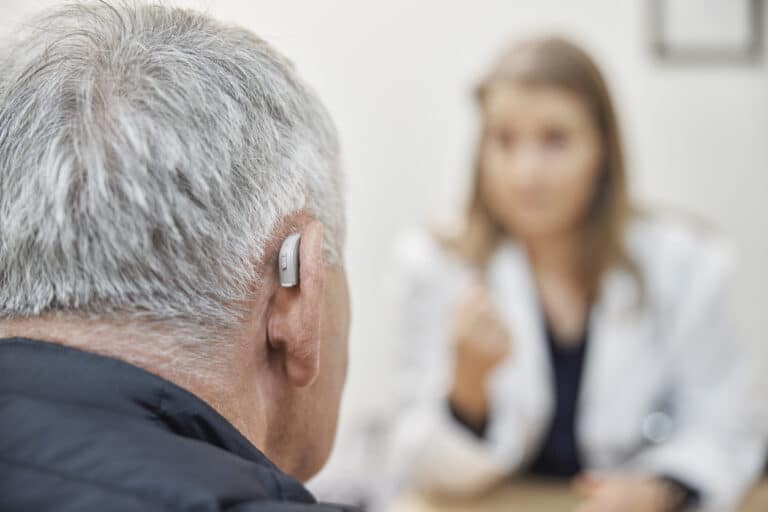In 2019, 7.1% of adults 45 and over used a hearing aid. The small but technologically advanced devices help treat hearing loss by amplifying speech sounds, suppressing irrelevant or annoying background noise, managing tinnitus symptoms and more.
While the majority of hearing aids have the same essential components: a microphone to collect sound, a processor or amplifier to raise its volume and a speaker to transmit it directly to the ear canal, the programming in each device will differ based on your specific hearing needs. Programming options will include one of the following:
- Manual programming. Manual programming is set by your hearing aid specialist and adjusted with hearing or lifestyle changes over time. While you have less control over manual programming, the settings tend to be more accurate.
- Automatic programming. Automatic programming can be changed through a smartphone app whenever an adjustment is needed. While automatic programming does not require a professional and is less time-consuming, it may be less accurate.
Many hearing aids operate without the need for constant user adjustment. Rather than making the adjustments yourself, devices can detect sound levels in your environment and adjust accordingly.
Your decision to choose manual or automatic programming will depend on your lifestyle, degree of hearing loss and comfort operating the technology. Let’s take a look at a couple of times when you may need to adjust your programming.
When You Are Experiencing Discomfort
Discomfort from your devices can be expected to a certain degree within the acclimation period. For instance, you may initially feel the newly amplified sound of milk steaming at Albina Press to be overwhelming, but this feeling should decrease over time. However, prolonged or painful audiological discomfort may indicate that your programming needs to be adjusted.
When You Hear Whistling Sounds
Most whistling feedback is the result of earwax buildup in your devices. If whistling feedback persists after removing earwax according to the instruction manual, consult your hearing specialist to determine if your devices need reprogramming.
When You Have New or Worsening Feedback
Hearing loss is a progressing condition. Over time, your degree of hearing loss may worsen, resulting in new programming needs. If your devices aren’t working as well as they used to, you may need to adjust your programming to accommodate your recent frequency loss.
When You Are in Different Environments
Your hearing aids may need to be adjusted depending on your environment. For instance, they may require different settings in a noisy restaurant than during a quiet night in. While many hearing aids will automatically adjust to their environments, some may struggle to do so. If your devices are not functioning as expected, contact a hearing specialist to address your concerns.
For more information on adjusting your hearing aid programming, contact Mt. Hood ENT & Allergy today to speak to one of our trusted specialists.
